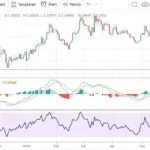The intersection of financial technology (fintech) and healthcare is reshaping how patients pay for medical services. Traditionally, healthcare billing has been complex, fragmented, and often stressful for patients—especially in systems where insurance coverage and out-of-pocket costs vary widely. However, with fintech solutions gaining ground, a new era of convenience, transparency, and flexibility is emerging in patient payments.
1. The Problem with Traditional Healthcare Payments
For decades, healthcare billing has been plagued by inefficiencies: delayed invoices, opaque pricing, and cumbersome payment processes. Patients frequently receive multiple bills for a single visit, while hospitals and clinics struggle with late or missed payments. These administrative challenges contribute to rising operational costs and lower patient satisfaction.
According to a recent survey, over 60% of patients find healthcare bills confusing, and nearly 40% have delayed payments due to unclear charges or limited payment options. The need for a more streamlined, digital, and patient-centric approach has opened the door for fintech innovation.
2. How Fintech is Changing the Landscape
Fintech companies are introducing smart solutions that simplify healthcare payments at every stage—from billing to financing and insurance integration. Some of the most impactful innovations include:
- Digital Payment Platforms
Hospitals are increasingly adopting mobile wallets, QR codes, and online portals that allow patients to pay instantly via debit/credit cards, e-wallets, or even cryptocurrencies. - Transparent Billing Systems
Fintech tools integrate real-time cost estimates, allowing patients to understand their financial responsibilities before treatment begins. - Buy Now, Pay Later (BNPL) for Medical Expenses
Medical BNPL solutions such as CareCredit or Cherry give patients access to installment payment options, reducing financial stress and increasing access to essential care. - Automated Insurance Claims
Fintech platforms powered by AI can streamline insurance verification and claims processing, reducing manual paperwork and accelerating reimbursements.
3. Empowering Patients Through Financial Accessibility
One of the most significant impacts of fintech in healthcare is financial inclusion. Patients who previously delayed treatments due to cost concerns now have access to flexible payment plans, micro-loans, and healthcare financing apps.
This transformation promotes preventive care—patients are more likely to seek timely treatment when payments are manageable and transparent. Additionally, fintech-enabled solutions can provide real-time reminders, helping patients stay on top of medical bills without falling into debt.
4. Benefits for Healthcare Providers
For healthcare organizations, fintech brings not only efficiency but also better cash flow management. Automated billing systems reduce administrative burdens, while predictive analytics help forecast revenue cycles more accurately.
Moreover, fintech integration improves the patient experience, leading to higher trust and loyalty. When payments are smooth and transparent, patient satisfaction scores rise—an increasingly important metric in healthcare performance.
5. Security and Compliance Considerations
With sensitive financial and medical data involved, fintech in healthcare must adhere to strict compliance standards such as HIPAA and PCI DSS. Many fintech platforms now use blockchain technology to ensure secure, tamper-proof transaction records, while AI-driven fraud detection helps prevent unauthorized activities.
As digital health payments grow, maintaining strong cybersecurity and privacy protocols remains essential to protect both patients and providers.
6. The Future of Healthcare Payments
The integration of fintech and healthcare is still in its early stages, but the trajectory is clear. Future innovations may include:
- AI-driven personalized payment plans based on patient financial profiles.
- Blockchain-based insurance settlements for instant reimbursements.
- Cross-border payment systems enabling global medical tourism.
Ultimately, fintech is not just improving how patients pay—it’s redefining how they experience healthcare.
Conclusion
Fintech’s entry into the healthcare sector marks a major shift toward a more patient-centric, efficient, and transparent payment ecosystem. By simplifying billing, enabling flexible financing, and promoting financial inclusivity, fintech is helping bridge the gap between healthcare affordability and accessibility.
As digital solutions continue to evolve, the collaboration between fintech innovators and healthcare providers will play a pivotal role in ensuring that paying for care becomes as seamless as receiving it.












